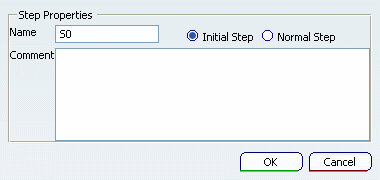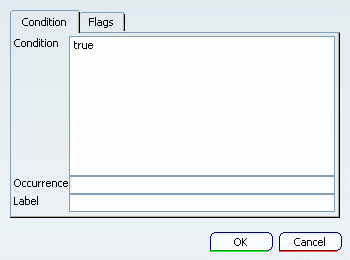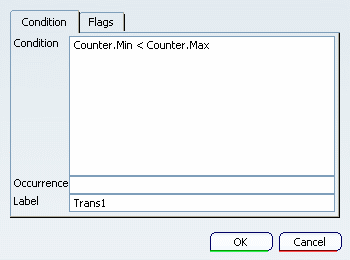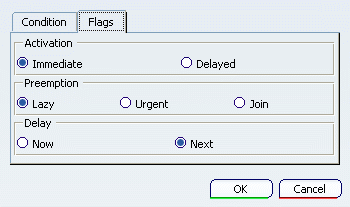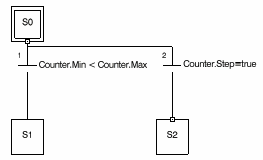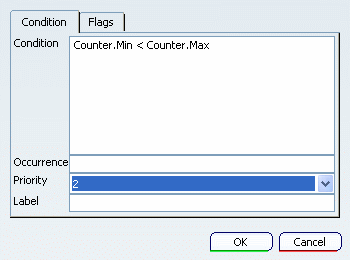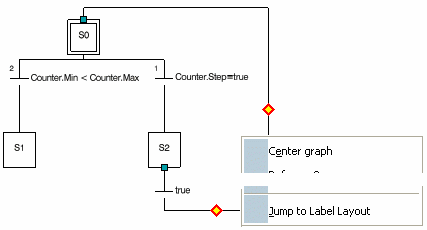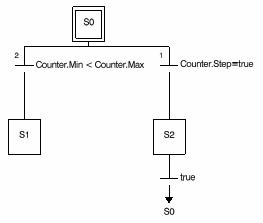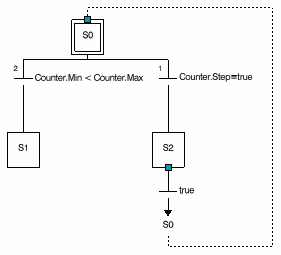Click Add Step
 then click on the blank page where you want to add the
step.
then click on the blank page where you want to add the
step.
The step S0 is added in the new sheet.
This step is represented by a double
line to indicate that it is the initial
step.
The step is also visible in
the specification tree.
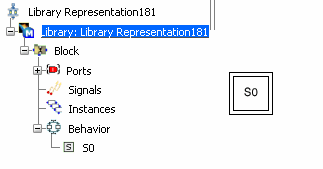
Note: Double-clicking the icon activates
the Add step command to add
an unlimited number of steps in the
graph.
Add a new step by clicking
Add Step again.
The step and the Counter block turn
red, indicating a problem.

Move the cursor over step S1 to
display a tool tip.
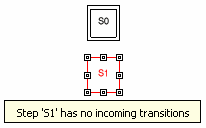
The message indicates that an incoming
transition needs to be added to step
S1.
Select step S0 (starting step of
the transition), then click Add Transition
 and select step S1 (ending step of the transition).
The red coloring disappears.
and select step S1 (ending step of the transition).
The red coloring disappears.

Move the step and then select the
transition. The transition can be moved by selecting
the yellow and red marks.
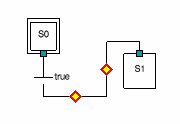
Drag and drop the green mark to
disconnect a transition from a step.
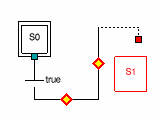
A transition linked to a step shows
a green mark as a link when the transition
is selected. The link is red otherwise.
Drag and drop the red mark to a
target step to connect the transition and the step.
Right-click step S1 and select
Add Step After.
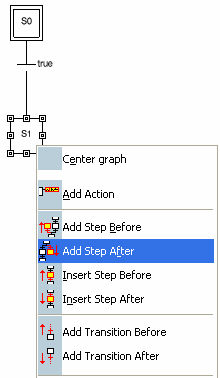
![]()
